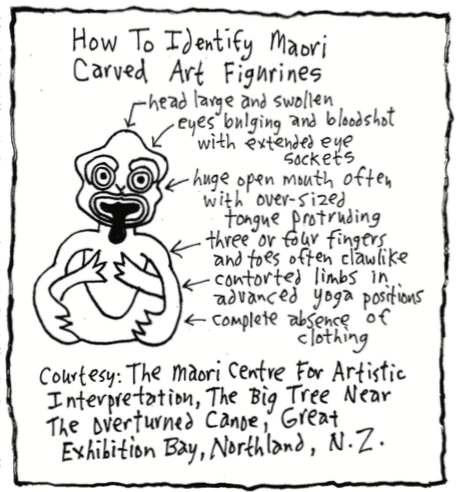Battles with enemy tribes were conducted at fixed times, under a strict code of warfare, and were melees of stabbing spears and swinging clubs. The object was to kill more of them than they killed of you; and seize the dead bodies of the killed enemy, or the live bodies of the captured ones. Men, women and children were treated the same.
The heads of dead victorious chiefs were carried back in honour. The heads of the defeated enemy were put on spear tips to be smoke-dried and displayed on war canoes or the walls of forts as battle trophies. Prisoners were either killed by the women widowed in the battle, or kept as slaves to be sacrificed and eaten later. The chief woman of a tribe had the privilege of eating a portion of the first enemy to be killed in a battle (the heart of the first killed was torn out and burned).
If a tribe besieging another tribe’s fortress found out that the tribe being besieged were running out of food or weapons, they supplied them with what they needed in order that the fight could continue. A sporting gesture. A defeated fortress was destroyed or abandoned and seldom rebuilt on the same spot. Bad luck.
War raged back and forth. Tribal territory changed hands. Some tribes were slaughtered out of existence, others had to stop fighting for a while to let their children grow up to become warriors so they could continue the fight. Some tribes lived on “fish, dogs and Enemies”. Charles Darwin thought the Maori “the most aggressive people I have ever encountered anywhere”. The Maori lived for war. They were the Spartans of the South Pacific.
The British soldier, who by the time they came to New Zealand had fought in India, North America and Africa; found the Maori “on the whole the grandest native enemy ever encountered”.
And the Maori also had a wicked sense of humour. This characteristic too comes through time and again in their dealings with the British. They are after all a Polynesian people: sunny disposition, live- for-today, fatalistic, easy going, but quick to temper. A complicated people.
When the white turnip people showed up in New Zealand, some of the Maori instantly put up a fierce resistance. And some of them didn’t. The white turnips were the enemy. Or the white turnips could be used as an ally to help defeat the enemy – other tribes. There were wars of Maori against Maori, Maori against the British, and Maori against the British and other Maori.

“War, which has been called the staple of the story of most countries, was specially so in New Zealand, whose chiefs did not shrink from battling with superior numbers”.
And so, inch for inch, other than Great Britain itself, the North Island of New Zealand became one of the bloodiest most violent places in the whole of the British Empire.
When the Europeans came to New Zealand for the first time, this is what they faced. The Maori are woven all through the story of the history of New Zealand, and have a part to play in almost everything that goes on. They are always there or thereabouts. When the British arrive in New Zealand for good, they are immediately ensnarled by the Maori in a constant controversy over how to deal with them and what to do next.
The Maori view of history is: “The old times which are in front of us”. The Maori are a complicated people. And the history of New Zealand is complicated because if it.
Note: In this book the Maori tribal names are not used. They are far too complicated to follow. Instead the Maori are referred to as being from the approximate geographical area their tribe(s) came from. For instance, Maori referred to as Taranaki or Waikato does not mean Maori from the tribes actually named Taranaki or Waikato, but Maori from the Taranaki or Waikato areas. Much easier to keep track of.
Second note: Of course being Maori, there are always exceptions to everything. There were Maori who flatly refused to live on any hilltops, Maori who are strictly vegetarian, Maori who collected wildflowers instead of dried human heads, and Maori who were lovers, not fighters. Not many mind you, but some.
- Chapter One Part one: A Humorous History of NZ
- Chapter One Part two: A Humorous History of NZ
- Chapter Two Part one: NZ is Formed
- Chapter Two Part two: NZ is Formed
- Chapter Three Part One: People Come to NZ
- Chapter Three Part Two: People Come to NZ
- Chapter Four Part One: The Maori of New Zealand
If you enjoyed this BFD article please consider sharing it with your friends.









